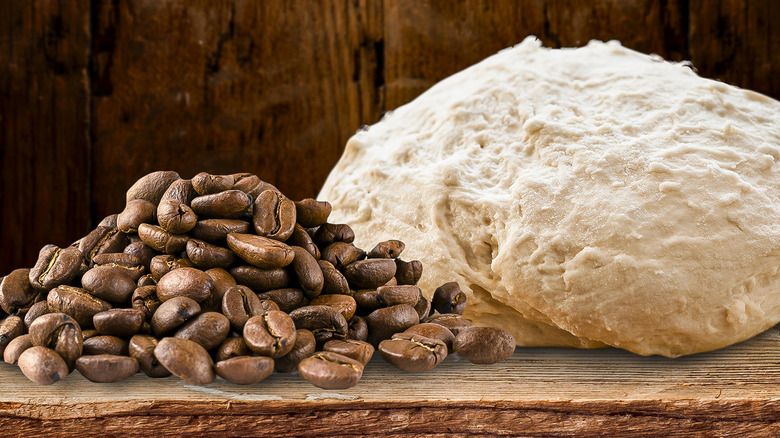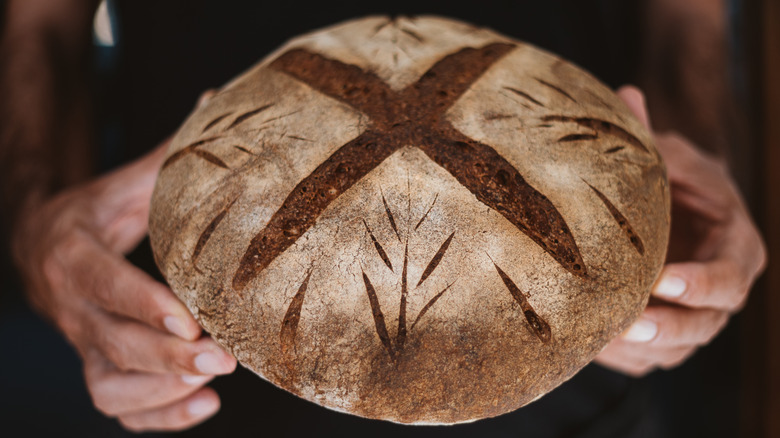Add Coffee To Your Bread Dough For A Way Crustier Loaf
A secret ingredient that will enhance your sourdough crust is probably already in your kitchen: coffee. Like adding salt to a recipe, adding brewed coffee will introduce a hint of depth without adding any recognizable coffee flavor — plus it makes the outside of your bread look delectable.
When you're making bread with coffee, the crumb may turn out a bit denser than you're used to. You may need to add some extra time during the proofing stage, but fortunately, coffee's acidity is perfect for gluten development. King Arthur Baking research and development specialist Melanie Wanders told Food & Wine in 2023, "Coffee's slightly acidic pH most likely accounts for the bread dough being easier to work with." Yeast and water release carbon dioxide into the dough, and a little coffee makes it easier to stretch and fold during its rise. That good folding will make the gluten strands form, stretch, and strengthen, leading to an excellent crust.
The key to baking with coffee is using a light hand. Too much coffee will inhibit yeast growth and leave you with a flat loaf. What you lose in height, though, you'll more than make up for in flavor, with a subtle bitterness and a gorgeous brown color. Mind the coffee's heat level, too — after all, water temperature is usually vital for sourdough, as yeast doesn't like boiling temperatures. Most sourdough will proof between 75 and 82 degrees Fahrenheit, while fresh-brewed coffee is generally 195 to 205 degrees Fahrenheit. Let it cool first.
How much coffee should you add to bread dough?
Since caffeine can inhibit yeast growth, we suggest you use a higher percentage of water than coffee in your bake. As Samuel Klein — green coffee buyer for Partners Coffee — told Food & Wine, you should substitute in ¼ to ½ cup of coffee for every 1 cup of water. To enhance the rise, use water as directed, then after the autolyse stage (when flour, water, and starter are mixed and given a short rest before the rest of the ingredients are incorporated), you could swap out the remaining water — 50 grams in our rustic sourdough recipe for brewed coffee, for example. Most bakers add salt at this point, too, and you can first dissolve the salt in the warm coffee.
To work against a dense crumb, you could add 1 or 2 teaspoons of vital wheat gluten. If you're using an all-purpose flour with about 10% protein, to bring the protein content to match that of bread flour — which is 11% to 13% — you should substitute 10 out of every 500 grams of flour with vital wheat gluten.
For an even cracklier crust, preheat your baking vessel for an hour. Use a Dutch oven or a baking stone with a steam bath. Create steam by putting a cast-iron pan on the bottom of your oven during preheating, add scored bread, and fill the pan with a cup of boiling water, shutting the oven door quickly. After baking, remove the loaf from its pan and let the bread cool with the oven door open, giving it time to release moisture.

